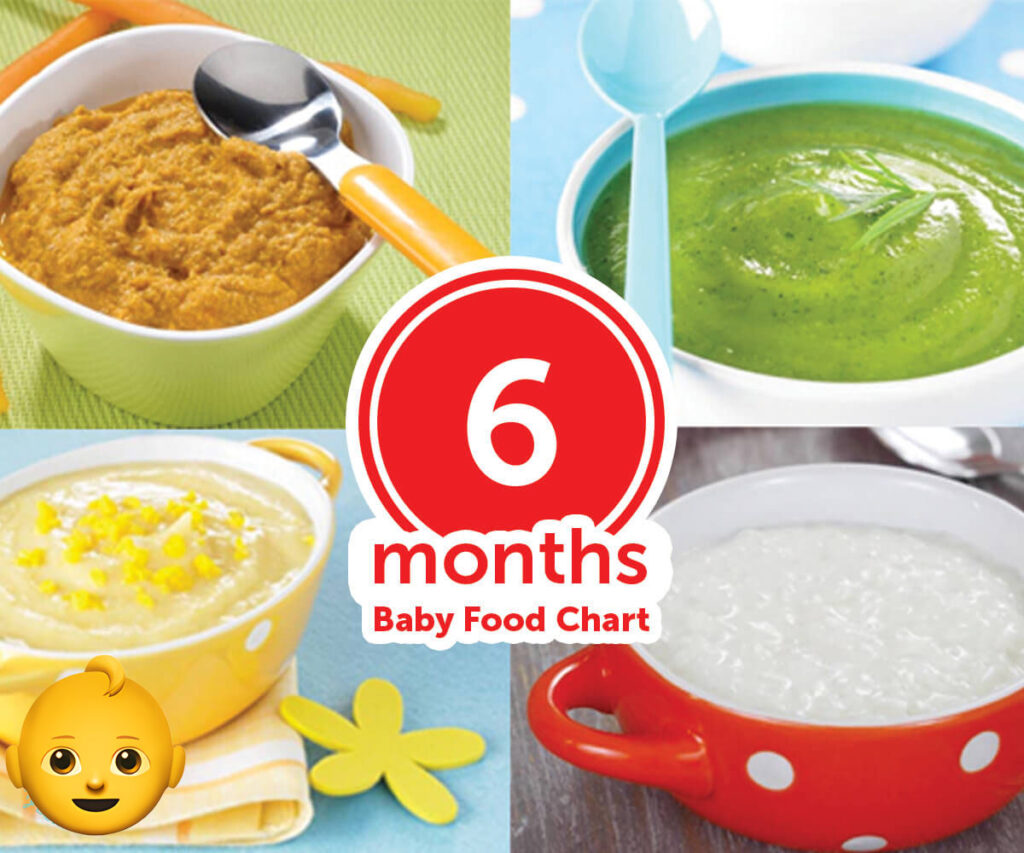Introduction
Welcoming a baby into the world is a beautiful experience, and as parents, we’re committed to providing them with the best care and nutrition. One of the most significant milestones in a baby’s life is the transition to solid baby food, which typically begins around the six-month mark. In this comprehensive guide, we’ll explore the essential aspects of introducing solid foods to your infant, from choosing the right foods to ensuring their safety and nourishment.

When to Start Solid baby food
Signs of Readiness
- Sitting with Support: Before introducing solid foods, your baby should have developed sufficient neck and upper body strength to sit up with minimal assistance. This is crucial for safe and effective eating as it reduces the risk of choking.
- Loss of Tongue Thrust Reflex: Babies are born with a natural reflex that pushes foreign objects out of their mouths with their tongues. When this reflex diminishes, usually around six months, it’s a sign that your baby might be ready for solid foods.
- Interest in Your Food: When your baby starts showing curiosity about your meals, such as reaching for your plate or trying to grab your food, it indicates a growing interest in what you’re eating. This curiosity can be a sign that they’re ready to explore beyond breastmilk or formula.
- Doubled Birth Weight: By around six months, most babies will have doubled their birth weight. This is an important physiological milestone and suggests that their digestive system is maturing, making it more capable of handling solid foods.
Choosing the Right baby food
Recommended First Foods
- Rice Cereal: Rice cereal is often recommended as a first food because it’s easily digestible and unlikely to cause allergies. It can be mixed with breastmilk or formula to create a smooth, semi-liquid consistency that’s gentle on your baby’s stomach.
- Mashed Bananas: Bananas are rich in potassium and provide a naturally sweet taste that many babies enjoy. They’re easy to mash and offer a pleasant introduction to solid foods.
- Pureed Sweet Potatoes: Sweet potatoes are packed with essential vitamins and minerals, including vitamin A and fiber. They have a naturally sweet flavor and a creamy texture when pureed, making them a great choice for early solid food.
- Avocado: Avocado is a healthy source of fats, which are crucial for brain development. Its smooth texture and mild taste make it an excellent choice for introducing healthy fats into your baby’s diet.
Preparing Homemade Baby Food
Steps to Prepare Homemade Baby Food
- Choose Fresh Ingredients: When making homemade baby food, it’s essential to select fresh, high-quality ingredients. Opt for organic produce when possible to minimize exposure to pesticides and chemicals.
- Cook Thoroughly: To ensure that the food is easily digestible and safe for your baby, steam or boil vegetables and fruits until they are soft and easy to mash. Cooking also helps break down some of the natural sugars in the food, making it easier for your baby to tolerate.
- Blend to Perfection: Use a food processor or blender to create a smooth, lump-free texture. This is important, especially when introducing solids for the first time, as it reduces the risk of choking and makes it easier for your baby to swallow.
- Store Properly: After preparing homemade baby food, portion it into small containers or ice cube trays and freeze. This allows you to have convenient servings ready when needed. Remember to label containers with the date to ensure freshness and safety.
These detailed explanations should provide you with a better understanding of the key points in the article about introducing solid foods to babies after six months. If you have any more questions or need further clarification on any topic, please feel free to ask.
Safety Measures
Ensuring your baby’s safety during mealtime is crucial:
Safety Tips
- Supervise Closely: Always be present when your baby is eating.
- Avoid Choking Hazards: Cut foods into small, manageable pieces.
- Monitor Allergies: Introduce one new food at a time to identify potential allergies.
Transitioning to Textured Foods
As your baby becomes more accustomed to solids, it’s time to introduce textures:
Progressing to Textured Foods
- Gradual Transition: Start with soft, well-cooked pieces of food.
- Introduce Finger Foods: Encourage self-feeding with age-appropriate options.
Maintaining a Balanced Diet
A balanced diet is vital for your baby’s growth and development:

